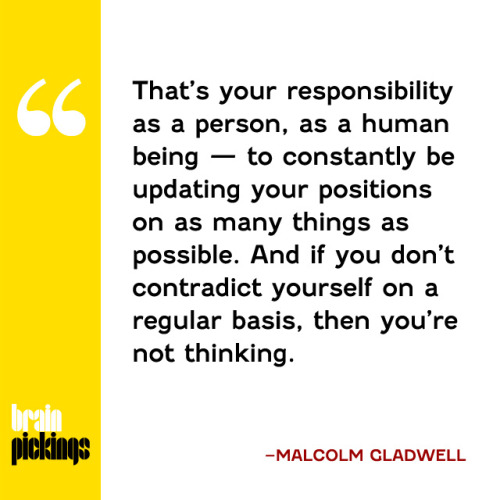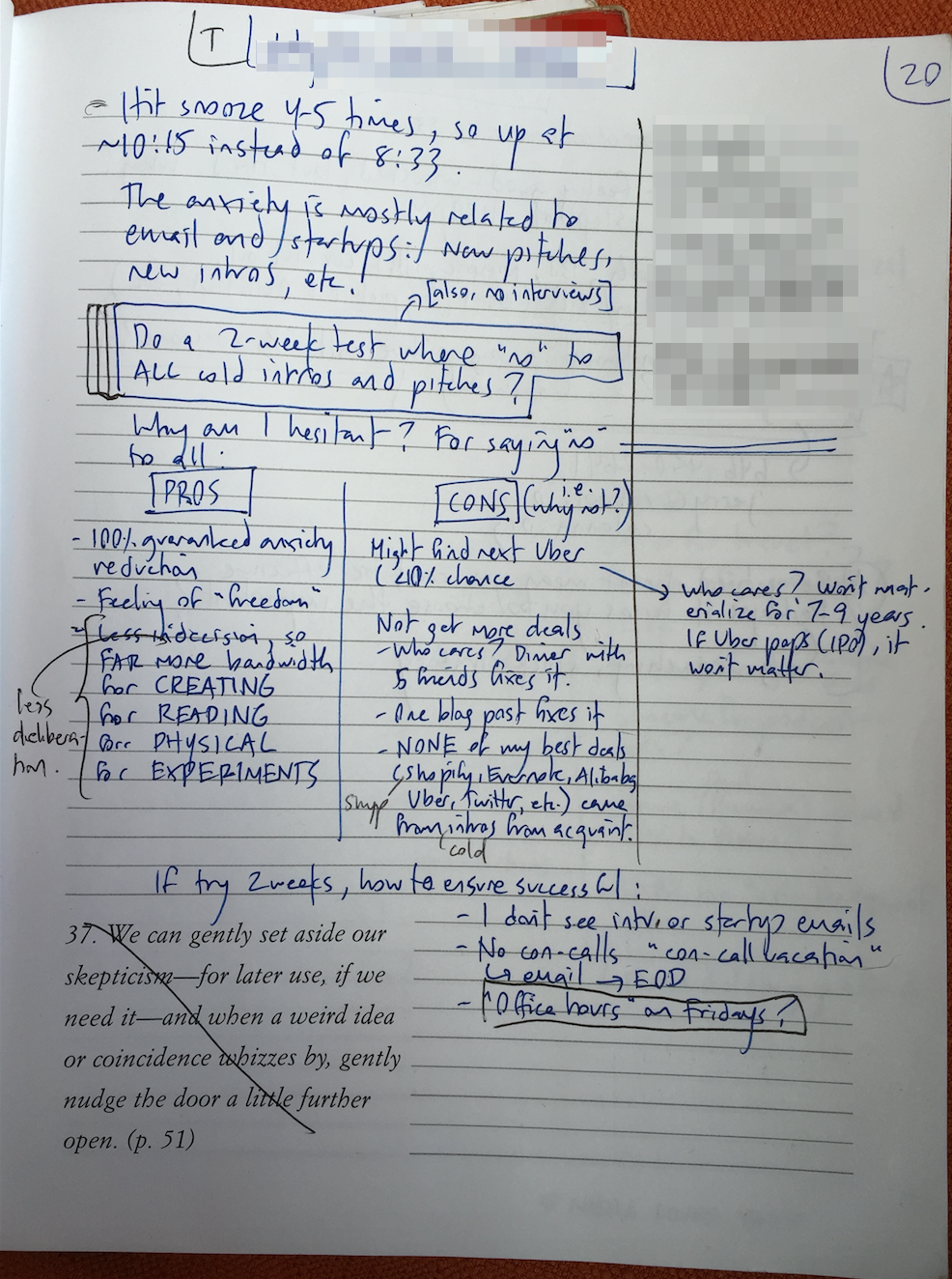Heyo!
This week's issue is a little long, but I can assure you there is greatness in this newsletter. I've distilled some of the most important things here, but each link is a rabbit hole of great writing and valuable ideas.
If you're feeling inspired, pass it on.
1. "Are You Having a Breakdown or a Breakthrough?"
This is loooong post from Tim Ferriss, but it touches on so many interesting ideas, including this one. Here's a little exercise that can help you find clarity while trying to make a hard decision.
For me, step one is always the same: write down the 20% of activities and people causing 80% or more of your negative emotions.
My step two is doing a “fear-setting” exercise on paper, in which I ask and answer “What is really the worst that could happen if I did what I’m considering? And so what? How could I undo any damage?”
As you’ll notice, I made lists of the guaranteed upsides versus speculative downsides. If we define “risk” as I like to—the likelihood of an irreversible negative outcome—we can see how stupid (and unnecessarily painful) all my fretting and procrastination was. All I needed to do was put it on paper.
2. The Maker's Schedule
I re-read Paul Graham's Maker's Schedule, Manager's Schedule this week and realized something that I've found to be important in my own work. A half day is the minimum amount of time required to write, design or code.
Here's a small peak at the article. I really encourage you to read the whole thing.
I find one meeting can sometimes affect a whole day. A meeting commonly blows at least half a day, by breaking up a morning or afternoon. But in addition there's sometimes a cascading effect. If I know the afternoon is going to be broken up, I'm slightly less likely to start something ambitious in the morning.
I know this may sound oversensitive, but if you're a maker, think of your own case. Don't your spirits rise at the thought of having an entire day free to work, with no appointments at all? Well, that means your spirits are correspondingly depressed when you don't. And ambitious projects are by definition close to the limits of your capacity. A small decrease in morale is enough to kill them off.
3. Let pedestrians define the walkways
A smart business lesson that marketers, developers and product people can draw inspiration from. Thanks Derek Sivers.
A new green college campus was built, but one thing was still debated:
Where in the grass should we put the paved walkways?
Some felt the walkways should be around the edges, to leave the center green and untouched.
Some felt the walkways should cut diagonal, connecting all buildings to all buildings.
One professor had the winning idea: Don't make any walkways this year. At the end of the year, look at where the grass is worn away, showing us where the students are walking. Then just pave those paths.
4. Andrew Chen's advice for starting a blog
Much of this great advice can also be put to good use on your existing blog.
Here’s the quick summary, for those who want a quick skim:
- Carpet bomb a key area and stake out mindshare
- Take time to find your voice
- Stay consistent on your blog format and topic
- Just show up
- Go deep on your topic of expertise
- Meatspace and the blogosphere are tightly connected
- Embrace the universal reader acquisition strategies for blogs
- Come up with new topics with brainstorms, news headlines, and notes-to-self
- Look at your analytics every day
- Don’t overdo it
Read the entire post for an explanation of each.
5. Quote of the week
This is from an interview with the New York Public Library's Paul Holdengräber. Read (and hear) the full interview here.

Have a great week!
Jimmy

